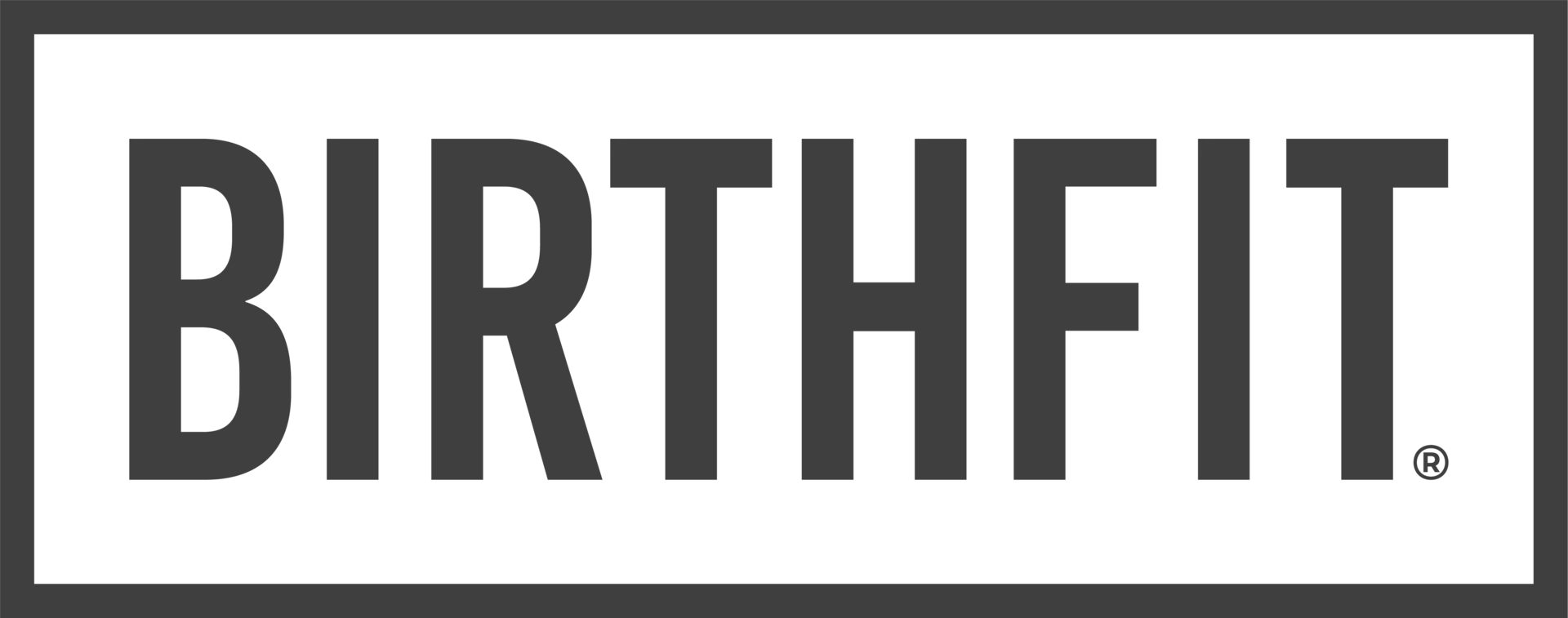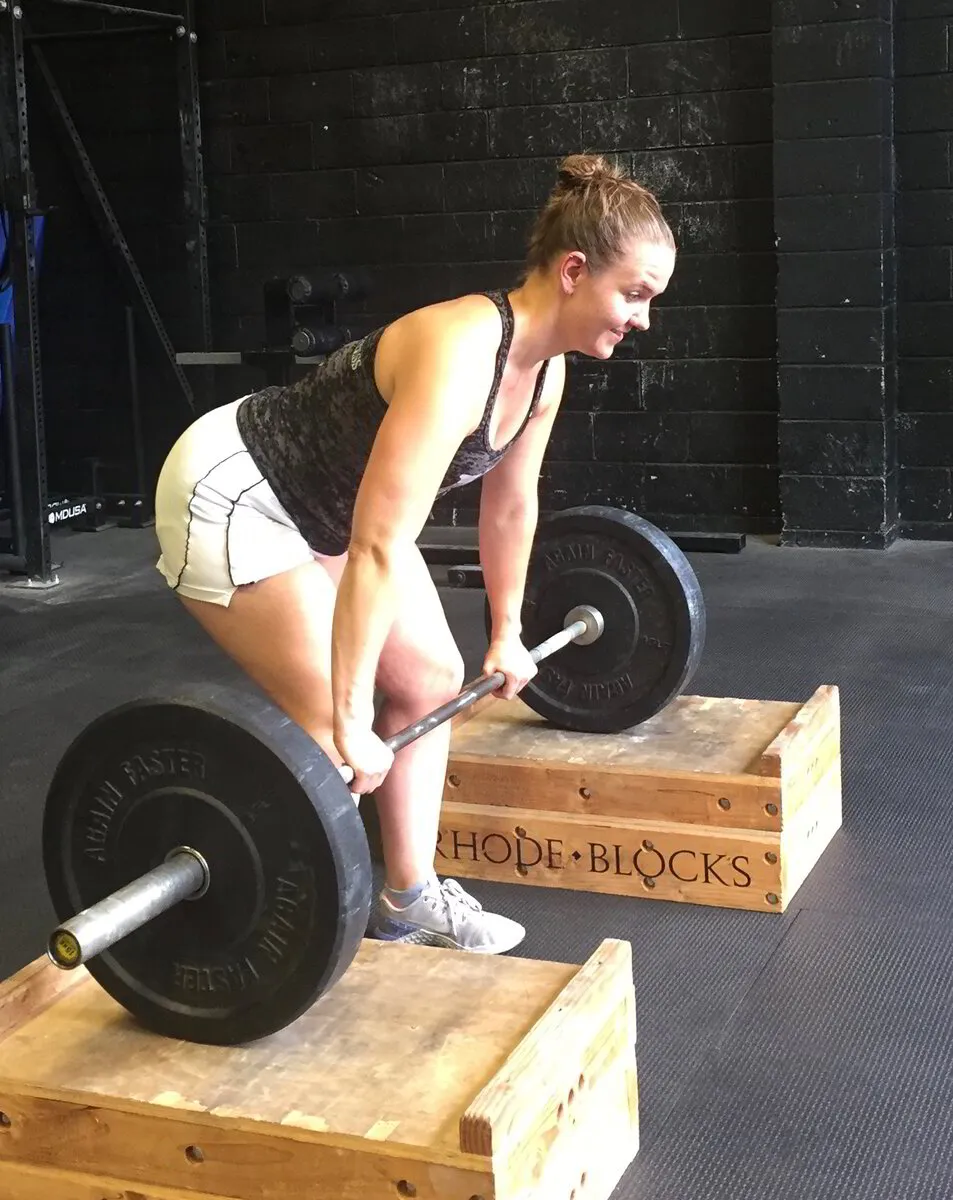Lifting Weights Postpartum
If you read the three-part blog series about diastasis recti by Dr. Lauren Keller, you probably have a pretty good understanding of what Diastasis Rectus Abdominis (or DRA) is, common causes, and ways to prevent and treat it. We learned that it is a common thing to encounter in the postpartum period. We also learned that maintaining correct posture and intra-abdominal pressure (IAP) through movement are two key components for healing.
Ground Rules for Postpartum Fitness
Before we get into modifications, let’s establish a few rules to lift by;
- Only take lifts you know you will make. Lifting weight that is too heavy can cause us to compromise our technique, which may lead to poor posture and loss of IAP.
- Avoid any barbell movements or lifts that cause a bulge or “coning” in your abdomen. If you notice this, too much pressure is being applied inappropriately and you likely have more healing to do before returning to that movement.
- Slow is fast.
With that in mind, let’s discuss the common faults we see and modifications for common barbell lifts if you are working on healing DRA postpartum.
Bench Press Fault
Traditional bench press technique has us arching the back with our shoulders pulled back (sticking our chest out). In this position, the diaphragm and pelvic floor are not parallel to one another and it’s impossible to maintain IAP. It also puts a lot of pressure on the abdominal wall.
Bench Press Modification
Bring feet up on the bench so that your back will be flat. With the diaphragm and pelvic floor parallel to each other, maintaining IAP will be attainable. For more of a challenge, you can bring your legs into the same position you would for Functional Progression 1!
Squat Fault
The squat is the queen of all movements, but it may be difficult to perform with ideal technique while you are healing DRA. We want to maintain the same amount of IAP throughout the entire movement, not just at the top of the squat. If you are unable to maintain pressure in the bottom of your squat, modifying will be more appropriate until you are able.
Squat Modification
We love the box squat! It has all the benefits of a regular squat, but allows us to have more control of our body. First, make it your goal to master the box squat without added weight to ensure you can maintain IAP and can control lowering your booty to the target. To practice diaphragm breathing and IAP through the full range of motion of a squat to depth, lower the height of the target to which you are squatting. When you are seated on the beginning target, your thighs should be parallel to the ground and feet flat on the floor (this is also the height of your box squat). Gradually lowering your target will help you learn to maintain IAP in the bottom of a squat and will give you a tactile cue until you are able to perform it without assistance. Once you can control bodyweight box squats and bodyweight squats to a target, adding weight will provide more of a challenge. Begin with weighted box squats and progress to weighted squats to depth, keeping the spine neutral and IAP throughout the entire movement.
Overhead Press Fault
Due to mobility issues or the inability to stabilize the core, you may have an “open scissors” posture when you press weight overhead. This causes your abdominal muscles to stretch and the spinal erectors to contract. As with the traditional bench press position, it isn’t possible to utilize our diaphragm for breathing or maintain IAP.
Overhead Press Modification
If we take a seat on a bench or a box, it is much easier to keep the ribs (and diaphragm) stacked over the pelvis for proper diaphragmatic breathing (2nd Figure). Dumbbells can be used instead of a barbell for a seated overhead press. You will still get the benefits of strengthening the upper body without compromising your core health! To prepare for a standing overhead press, practice diaphragmatic breathing and maintaining IAP while holding an object overhead (a bumper plate or set of dumbbells works well).
Deadlift Fault
Like the squat, the deadlift may be difficult to execute while keeping the same IAP in our core from start to finish. The hip hinge we utilize to begin the deadlift may be a difficult position to hold IAP and the lift should be modified. If you can perform a single repetition but are unable to maintain that neutral spine and IAP through multiple reps, it would be appropriate to modify the deadlift for sets.
Deadlift Modification
Beginning the deadlift with the weight elevated off the floor (you can use bumper plates or jerk boxes) will increase the angle of the hip hinge. This may make it easier to maintain the same amount of IAP from the beginning to the end of the lift and through more than one repetition. You can practice holding IAP through the full range of motion by doing the good morning exercise. Start without weight (can use a PVC pipe or broom handle across your shoulders) and slowly add weight or the resistance of an exercise band.
If you have questions about postpartum exercise and exercising while healing DRA, please reach out to your local BIRTHFIT Regional Director or BIRTHFIT Coach! You can also schedule a consultation with a member of the BIRTHFIT Tribe.
Happy Lifting!
Alicia Van Balen
BIRTHFIT Pittsburgh-SouthSide @birthfit_pittsburgh_southside
Get Started
Effective programs for both MIND ⊕ BODY
This is a general strength and conditioning program for women in all seasons and cycles of life. You receive four workouts each week with options for those with limited equipment and variations on movements.
Start moving and training with your cycle ❤︎
Slow is Fast when you heal your core and pelvic floor from the inside out by starting with breath work, natural movement patterns, and continue to progressively build upon a solid foundation. The number one referral for doctors and midwives.
Are you open to conception? Join us in B! Community training. A general strength and conditioning for women that train while honoring their menstrual cycle. Everyone is in a different part of their journey, we support you where you are.
Do Pregnancy Different, when you connect with your body daily through a safe, effective prenatal training program for all levels and all fitness backgrounds that includes core and pelvic floor prehab, mobility, strength, and conditioning.





